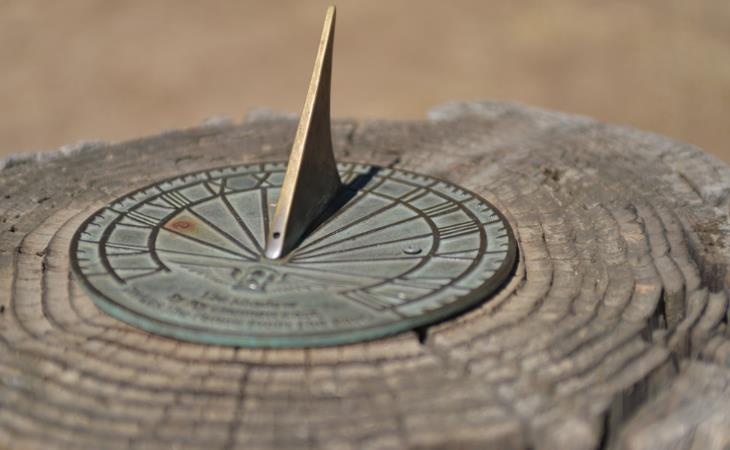
This method is the quickest. It will only work if you have a clear view of the horizon. Stand with your feet toward the sun and extend one arm out with your palm facing you. Align the top of your finger with the bottom of the sun, and measure how many fingers separate the sun and the horizon. If needed, stack your other arm below, as shown in the photo:
Each finger equals 15 minutes; each hand (without the thumb) equals an hour.
This method tells you how long it has been since sunrise if you stack your hands over the eastern horizon, or how long you have left till sunset if you stack your hands over the west. If you want to use this method to tell the exact time, you’ll need to know the exact times of sunrise and sunset.

Just like the previous method, this one is built on previous knowledge. You will either need to know the exact times of sunrise and sunset or how many hours there are in a day. Knowing both will help you determine the time most accurately.
If you don’t have any of this information, this method can still help you estimate the general relative time of the day, letting you know, for instance, that there is a quarter of the day left until sunset or that we’ve just passed midday.
Visualize the arc the sun makes when it passes through the sky. Now try dividing this arc into the number of hours in a day. The location of the sun on your arc will tell you the time with a deviation of 20 to 30 minutes.

This method requires some patience and a certain level of skill. If you have a compass, you can easily find the North. If not, here’s how to find a true North.
Find a straight stick and place it perpendicular to the ground. Place a rock at the end of your stick's shadow. After 20 minutes or so, the shadow will have moved. Place another rock at the edge of this new shadow. The first rock you placed marks your west, and the second one you placed marks your east.
Now that you have both west and east, finding north and south will be easy. Noon is when your shadow will point north. Use this axiom as a way to estimate the time according to where your shadow falls.

Most people think that making a sundial is as easy as taking a smooth round surface, poking a stick in the middle of that circle, dividing the circle into 12 equal parts, and calling it a day. This is true only if you’re on or close to the equator. Other sundials must be altered according to latitude and true North.
According to the European Association for Astronomy Education, the stick in the middle of a sundial called a gnomon, “must point towards the true North and the gnomon’s angle with the horizontal plane [flat surface of the sun dial] must be equal to the geographical latitude where the sundial is placed.“
By now, you probably realize that most sundials at stores aren’t accurate time tellers and will function better as garden accessories. Here is what you need to know to make an accurate sundial:
Find out your latitude by clicking here. Subtract your latitude from 90 to get the angle at which the gnomon should meet with your sundial surface. You will attach it at the midpoint between the center and perimeter of your sundial. The length of the gnomon will be the length between the noon point to the sundial's midpoint. For further information, visit Urban Survival.